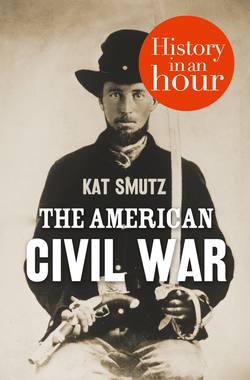Читать книгу The American Civil War: History in an Hour - Kat Smutz, Kat Smutz - Страница 6
ОглавлениеFrom One Revolution to Another
After the American Revolution ended in 1783, there were those who took notice that slaves had no rights at all, much less freedom. A war had been fought with the intent of liberty for all, and yet women, Africans, African-Americans, and Native Americans still had no voice and no rights in the governing and development of the nation that had just been born. They had all done their part in the fight for freedom, only to be excluded once the fight was done. And so the first seeds of dissent were sown, and the growing discontent would end with the American Civil War.
Slaves picking cotton
It was an issue that would eventually divide the fledgling nation. In the North, slave labour was used, but it was not as crucial to industrial growth as it was in the Southern states, where the economy was based upon agriculture (pictured above). In the North, the State of Pennsylvania was the first to enact a plan that would gradually set free their slaves, with the aim of eventually abolishing slavery. But as other states in the North began to follow the growing anti-slavery movement, the South felt threatened by the possibility that abolition would spread until it was illegal to own slaves at all.
Then, as the nation began to expand westwards across the continent, a new cause for concern arose. How to determine whether each new state that entered the Union was free or slave? It could mean upsetting the balance of power in the new government, and representatives of slave states and free states were constantly at odds. Those on each side of the slavery issue would not stand for the opposition to have more power and influence. Level-headed statesmen, who could see the threat of war and the potential destruction of the new nation, worked to maintain that delicate balance and keep both in check. But tension continued to build.
The United States was still an infant nation, still learning to walk and still growing. As it developed, legislation was a matter of trial and error in an effort to meet its changing needs. With every new piece of legislation seemed to arise the question of how slavery fitted into the picture. And once again, tempers flared as each side tried to maintain at least an equal – if not greater – influence in the governing of the country.
Controversy between anti-slavery supporters in the North and slaveholders in the South slowly grew into animosity and resentment, and violence flared. Each side fought hard for political control in order to protect their rights and beliefs and the relations between the two regions of the new nation finally reached a breaking point.
A series of events that seemed to fall like dominos led up to that fateful April day in Charleston Harbor. A politician from Illinois, Abraham Lincoln, a man known for his opposition to slavery, was nominated as the Republican candidate for president. The Southern members of Congress declared they would not stand for it if Lincoln was elected. But, in November 1860, that was exactly what happened.
Abraham Lincoln, photograph by Henry F. Warren
The first domino had fallen. True to the promise of intolerance of a president who might outlaw slavery, South Carolina was the first state to opt to secede, to severe ties to the Union and strike out as a country on its own. That was in December 1860. Other states followed, then a ship attempting to resupply Federal forces in Charleston was fired upon and the dominoes began to fall faster. The seceding states held a convention, wrote their own constitution, set up their own provisional government and elected a provisional president. By the time those first fateful shots were fired upon Fort Sumter, the controversy over slavery had already given birth to the Confederate States of America.
